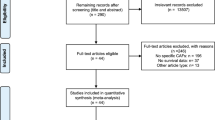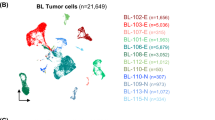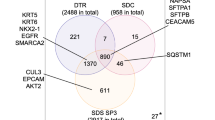Abstract
Aim:
Bufalin is one of the active components in the traditional Chinese medicine ChanSu that is used to treat arrhythmia, inflammation and cancer. BF211 is a bufalin derivative with stronger cytotoxic activity in cancer cells. The aim of this study was to identify the putative target proteins of BF211 and the signaling pathways in cancer cells.
Methods:
A549 human lung cancer cells were treated with BF211. A SILAC-based proteomic analysis was used to detect the protein expression profiles of BF211-treated A549 cells. Cellular proteasome activities were examined using fluorogenic peptide substrates, and the binding affinities of BF211 to recombinant proteasome subunit proteins were evaluated using the Biacore assay. The expression levels of proteasome subunits were determined using RT-PCR and Western blotting, and the levels of the integral 26S proteasome were evaluated using native PAGE analysis.
Results:
The proteomic analysis revealed that 1282 proteins were differentially expressed in BF211-treated A549 cells, and the putative target proteins of BF211 were associated with various cellular functions, including transcription, translation, mRNA splicing, ribosomal protein synthesis and proteasome function. In A549 cells, BF211 (5, 10, and 20 nmol/L) dose-dependently inhibited the enzymatic activities of proteasome. But BF211 displayed a moderate affinity in binding to proteasome β1 subunit and no binding affinity to the β2 and β5 subunits. Moreover, BF211 (0.1, 1, and 10 nmol/L) did not inhibit the proteasome activities in the cell lysates. BF211 (5, 10, and 20 nmol/L) significantly decreased the expression level of proteasome β1 subunit and the levels of integral 26S proteasome in A549 cells. Similarly, knockdown of the β1 subunit with siRNA in A549 cells significantly decreased integral 26S proteasome and proteasome activity.
Conclusion:
BF211 inhibits proteasome activity in A549 cells by decreasing β1 subunit expression and disrupting proteasome assembly.
Similar content being viewed by others
Log in or create a free account to read this content
Gain free access to this article, as well as selected content from this journal and more on nature.com
or
References
Zhao L, Liu S, Che X, Hou K, Ma Y, Li C, et al. Bufalin inhibits TGF-beta-induced epithelial-to-mesenchymal transition and migration in human lung cancer A549 cells by downregulating TGF-beta receptors. Int J Mol Med 2015; 36: 645–52.
Jiang L, Zhao MN, Liu TY, Wu XS, Weng H, Ding Q, et al. Bufalin induces cell cycle arrest and apoptosis in gallbladder carcinoma cells. Tumour Biol 2014; 35: 10931–41.
Li C, Hashimi SM, Cao S, Qi J, Good D, Duan W, et al. Chansu inhibits the expression of cortactin in colon cancer cell lines in vitro and in vivo. BMC Complementary Alter Med 2015; 15: 207.
Qi F, Li A, Inagaki Y, Kokudo N, Tamura S, Nakata M, et al. Antitumor activity of extracts and compounds from the skin of the toad Bufo bufo gargarizans Cantor. Int Immunopharmacol 2011; 11: 342–9.
Meng Z, Yang P, Shen Y, Bei W, Zhang Y, Ge Y, et al. Pilot study of huachansu in patients with hepatocellular carcinoma, nonsmall-cell lung cancer, or pancreatic cancer. Cancer 2009; 115: 5309–18.
Lei M, Xiao Z, Ma B, Chen Y, Liu M, Liu J, et al. Synthesis and biological evaluation of bufalin-3-yl nitrogen-containing-carbamate derivatives as anticancer agents. Steroids 2016; 108: 56–60.
Wu SH, Wu TY, Hsiao YT, Lin JH, Hsu SC, Hsia TC, et al. Bufalin induces cell death in human lung cancer cells through disruption of DNA damage response pathways. Am J China Med 2014; 42: 729–42.
Wu SH, Hsiao YT, Chen JC, Lin JH, Hsu SC, Hsia TC, et al. Bufalin alters gene expressions associated DNA damage, cell cycle, and apoptosis in human lung cancer NCI-H460 cells in vitro. Molecules 2014; 19: 6047–57.
Yin PH, Liu X, Qiu YY, Cai JF, Qin JM, Zhu HR, et al. Anti-tumor activity and apoptosis-regulation mechanisms of bufalin in various cancers: new hope for cancer patients. Asian Pac J Cancer Prev 2012; 13: 5339–43.
Sun L, Chen T, Wang X, Chen Y, Wei X . Bufalin induces reactive oxygen species dependent bax translocation and apoptosis in astc-a-1 cells. Evid Based Complement Alternat Med 2011; 2011: 249090.
Wang T, Mu L, Jin H, Zhang P, Wang Y, Ma X, et al. The effects of bufadienolides on HER2 overexpressing breast cancer cells. Tumor Biol 2016; 37: 7155–63.
Kai S, Lu JH, Hui PP, Zhao H . Pre-clinical evaluation of cinobufotalin as a potential anti-lung cancer agent. Biochem Biophys Res Commun 2014; 452: 768–74.
Feng L, Zhang D, Fan C, Ma C, Yang W, Meng Y, et al. ER stress-mediated apoptosis induced by celastrol in cancer cells and important role of glycogen synthase kinase-3beta in the signal network. Cell Death Disease 2013; 4: e715.
Zhang H, Angelopoulos N, Xu Y, Grothey A, Nunes J, Stebbing J, et al. Proteomic profile of KSR1-regulated signalling in response to genotoxic agents in breast cancer. Breast Cancer Res Treatment 2015; 151: 555–68.
Ounap K, Leetsi L, Matsoo M, Kurg R . The stability of ribosome biogenesis factor WBSCR22 is regulated by interaction with TRMT112 via ubiquitin-proteasome pathway. PLoS One 2015; 10: e0133841.
McCormack TA, Cruikshank AA, Grenier L, Melandri FD, Nunes SL, Plamondon L, et al. Kinetic studies of the branched chain amino acid preferring peptidase activity of the 20S proteasome: development of a continuous assay and inhibition by tripeptide aldehydes and clasto-lactacystin beta-lactone. Biochemistry 1998; 37: 7792–800.
Stein RL, Melandri F, Dick L . Kinetic characterization of the chymotryptic activity of the 20S proteasome. Biochemistry 1996; 35: 3899–908.
Yue QX, Cao ZW, Guan SH, Liu XH, Tao L, Wu WY, et al. Proteomics characterization of the cytotoxicity mechanism of ganoderic acid D and computer-automated estimation of the possible drug target network. Mol Cell Proteomics 2008; 7: 949–61.
Kaneko T, Murata S . Using siRNA techniques to dissect proteasome assembly pathways in mammalian cells. Methods Mol Biol 2012; 832: 433–42.
Yang Y, Fruh K, Ahn K, Peterson PA . In vivo assembly of the proteasomal complexes, implications for antigen processing. J Biol Chem 1995; 270: 27687–94.
Alevizopoulos K, Calogeropoulou T, Lang F, Stournaras C . Na+/K+ ATPase inhibitors in cancer. Curr Drug Targets 2014; 15: 988–1000.
Calderon-Montano JM, Burgos-Moron E, Orta ML, Maldonado-Navas D, Garcia-Dominguez I, Lopez-Lazaro M . Evaluating the cancer therapeutic potential of cardiac glycosides. BioMed Res Int 2014; 2014: 794930.
Chen A, Yu J, Zhang L, Sun Y, Zhang Y, Guo H, et al. Microarray and biochemical analysis of bufalin-induced apoptosis of HL-60 cells. Biotechnol Lett 2009; 31: 487–94.
Qiu J, Gao HQ, Liang Y, Yu H, Zhou RH . Comparative proteomics analysis reveals role of heat shock protein 60 in digoxin-induced toxicity in human endothelial cells. Biochim Biophys Acta 2008; 1784: 1857–64.
Zhang D, Hou Q, Wang M, Lin A, Jarzylo L, Navis A, et al. Na,K-ATPase activity regulates AMPA receptor turnover through proteasome-mediated proteolysis. J Neurosci 2009; 29: 4498–511.
Wang Y, Lonard DM, Yu Y, Chow DC, Palzkill TG, Wang J, et al. Bufalin is a potent small-molecule inhibitor of the steroid receptor coactivators SRC-3 and SRC-1. Cancer Res 2014; 74: 1506–17.
Eletr ZM, Wilkinson KD . Regulation of proteolysis by human deubiquitinating enzymes. Biochim Biophys Acta 2014; 1843: 114–28.
Komander D . The emerging complexity of protein ubiquitination. Biochem Soc Trans 2009; 37: 937–53.
Vangala JR, Dudem S, Jain N, Kalivendi SV . Regulation of PSMB5 protein and beta subunits of mammalian proteasome by constitutively activated signal transducer and activator of transcription 3 (STAT3): potential role in bortezomib-mediated anticancer therapy. J Biol Chem 2014; 289: 12612–22.
Adams J, Palombella VJ, Sausville EA, Johnson J, Destree A, Lazarus DD, et al. Proteasome inhibitors: a novel class of potent and effective antitumor agents. Cancer Res 1999; 59: 2615–22.
Huh JR, Leung MW, Huang P, Ryan DA, Krout MR, Malapaka RR, et al. Digoxin and its derivatives suppress TH17 cell differentiation by antagonizing RORgamma activity. Nature 2011; 472: 486–90.
Wang X, Yen J, Kaiser P, Huang L . Regulation of the 26S proteasome complex during oxidative stress. Sci Signaling 2010; 3: ra88.
Kim HM, Yu Y, Cheng Y . Structure characterization of the 26S proteasome. Biochim Biophys Acta 2011; 1809: 67–79.
Bedford L, Paine S, Sheppard PW, Mayer RJ, Roelofs J . Assembly, structure, and function of the 26S proteasome. Trends Cell Biol 2010; 20: 391–401.
Coux O, Tanaka K, Goldberg AL . Structure and functions of the 20S and 26S proteasomes. Ann Rev Biochem 1996; 65: 801–47.
Hirano Y, Kaneko T, Okamoto K, Bai M, Yashiroda H, Furuyama K, et al. Dissecting beta-ring assembly pathway of the mammalian 20S proteasome. EMBO J 2008; 27: 2204–13.
Xie Y . Structure, assembly and homeostatic regulation of the 26S proteasome. J Mol Cell Biol 2010; 2: 308–17.
Bhattacharyya S, Yu H, Mim C, Matouschek A . Regulated protein turnover: snapshots of the proteasome in action. Nat Rev Mol Cell Biol 2014; 15: 122–33.
Sledz P, Unverdorben P, Beck F, Pfeifer G, Schweitzer A, Forster F, et al. Structure of the 26S proteasome with ATP-gammaS bound provides insights into the mechanism of nucleotide-dependent substrate translocation. Proc Natl Acad Sci U S A 2013; 110: 7264–9.
Kunjappu MJ, Hochstrasser M . Assembly of the 20S proteasome. Biochim Biophys Acta 2014; 1843: 2–12.
Acknowledgements
This work was supported in part by Shanghai Science & Technology Support Program (No 13431900401), Shanghai Science & Technology Innovation Action program (No 15140904800), the National Natural Science Foundation of China (No 81373964), and the National Science & Technology Major Project of China (No 2014ZX09301-306-03).
Author information
Authors and Affiliations
Corresponding authors
Additional information
Supplementary information is available at the website of Acta Pharmacologica Sinica.
Supplementary information
Supplemental Figure S1
BF211 induce accumulation of ubiquitinated proteins in PC-3 cells and HeLa cells. (DOC 137 kb)
Supplemental Table S1
Primers used in RT-PCR assay of mRNA levels of HSP90AA1, HSP90AB1, PSMA2, PSMB6, PSMB7, PSMB5 and GAPDH. (DOC 32 kb)
Supplemental Table S2
List of proteins differentially expressed in BF211-treated cells compared with control cells. (DOC 1000 kb)
Rights and permissions
About this article
Cite this article
Sun, P., Feng, Lx., Zhang, Dm. et al. Bufalin derivative BF211 inhibits proteasome activity in human lung cancer cells in vitro by inhibiting β1 subunit expression and disrupting proteasome assembly. Acta Pharmacol Sin 37, 908–918 (2016). https://doi.org/10.1038/aps.2016.30
Received:
Accepted:
Published:
Issue date:
DOI: https://doi.org/10.1038/aps.2016.30
Keywords
This article is cited by
-
Bufalin Induces Programmed Necroptosis in Triple-Negative Breast Cancer Drug-Resistant Cell Lines through RIP1/ROS-Mediated Pathway
Chinese Journal of Integrative Medicine (2022)
-
New therapeutic aspects of steroidal cardiac glycosides: the anticancer properties of Huachansu and its main active constituent Bufalin
Cancer Cell International (2019)
-
Tumor-targeting efficacy of a BF211 prodrug through hydrolysis by fibroblast activation protein-α
Acta Pharmacologica Sinica (2018)



